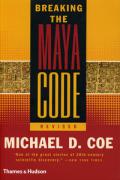Breaking the Maya Code

The decipherment of the Maya script was, Coe states, "one of the most exciting intellectual adventures of our age, on a par with the exploration of space and the discovery of the genetic code." He presents the story eloquently and in detail, with many illustrations of the mysterious Maya inscriptions and the people who tried to decipher them. Most of the credit, he says, goes to the late Yuri V. Knorosov of the Russian Institute of Ethnography, but many others participated. They did not always agree, and some of them went up blind alleys. Coe -emeritus professor of anthropology at Yale University- vividly describes the battles, missteps and successes. What is now established, he writes, is that "the Maya writing system is a mix of logograms and syllabic signs; with the latter, they could and often did write words purely phonetically."
Coe concludes with a swipe at "dirt archaeologists" who believe the decipherment of Maya writing "is not worthy of notice." According to them, he asserts, "the Maya inscriptions are 'epiphenomenal,' a ten-penny word meaning that Maya writing is only of marginal application since it is secondary to those more primary institutions -economy and society- so well studied by the dirt archaeologists." Coe sees that attitude as "sour grapes" and ascribes it to "the inability or unwillingness of anthropologically trained archaeologists to admit that they are dealing with the remains of real people, who once lived and spoke."